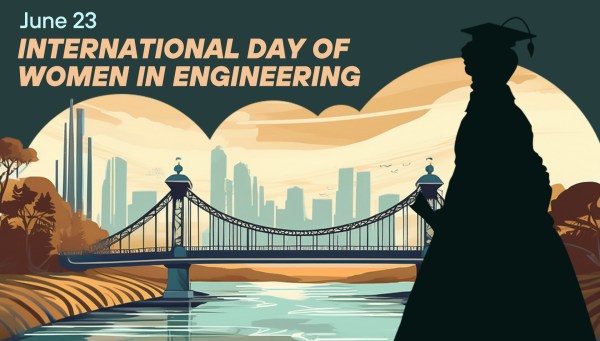On Friday 6 October, I unexpectedly found out that Ada Lovelace Day, also known as Ada Lovelace Day, will be celebrated on Tuesday 10 October 2023. I’m sure many of you are asking the same question I asked myself at the time: “What is this? What is being commemorated? Why so much attention to this date?” My curiosity got the better of me and I decided to investigate. I was amazed, surprised, overwhelmed, astonished, astonished, stunned, perplexed, stupefied, stupefied, among other emotions.
I am going to explain to you what Ada Lovelace Day is all about, but first, I will share with you what surprised me most. Ada Lovelace, a WOMAN born in 1815 in London, died in 1852 at the early age of 36.
What did Ada achieve so that, 128 years after her death (in 1980), she began to receive recognition from important institutions? She has received international awards of various kinds, universities have been named after her, programming languages have been created in her name, international prizes have been awarded in her name, annual conferences are organised around the world in her memory, famous poets have dedicated books to her. Even the giant Google dedicated its “Google Doodle” to him on the 197th anniversary of his birth. But most remarkable of all, she was officially assigned an International Day, Ada Lovelace Day, which has been celebrated since 2009 on the second Tuesday of October every year.
Perhaps, if I told you that this woman, due to the prejudices of the time, hid her identity, we would understand why she was never recognised during her lifetime, and how sadly she died thousands of pounds in debt.
Mind-boggling, isn’t it? All the recognition this woman missed out on during her lifetime, what an injustice not to recognise her contribution until 128 years after her death with all that Ada contributed to the development of mankind.
Who was this wonderful woman?
Augusta Ada King, better known as Ada Lovelace and nicknamed the “enchantress of numbers”, was a British mathematician and writer. A woman who developed all her professional activity within the STEM world, which I will explain later. And she stood out for all her work on Charles Babbage’s general-purpose mechanical computer, the so-called analytical machine. She was the first to recognise that the machine had applications beyond pure calculation and to have published what is recognised today as the first algorithm intended to be processed by a machine, which is why she is considered to be the first computer programmer.
But wait, that’s not all:
Ada, deduced and foresaw the ability of machines to go beyond simple number crunching. Ada saw the practical applications of the machine, and rightly believed that in the future it could even compose music and make graphics:
“Suppose, for example, that the fundamental relationships between sounds, in the art of harmony, were susceptible of such expressions and adaptations: the machine could compose musical pieces as long and as complex as you like”.
Ada Lovelace
And there is more:
Ada was the first person to realise that the numbers stored inside the Analytical Engine could represent other things beyond the magnitude of those numbers, i.e. the symbolic character of the machine’s internal numerical representation. It also provided a first idea of what the software would be:
“The Analytical Machine has no pretensions to create anything. It can do anything we can command it to do”.
Ada Lovelace
My Humble Acknowledgement to Ada Lovelace and Other Invisible STEM Women
Dear Ada, you were a mathematical genius, the first computer programmer and a prophetess of the computer age. Wherever you are, my sincere appreciation and commitment to do all I can to raise the profile of STEM women and to create role models to encourage the inclusion of girls in STEM careers, as well as to support women already working in this field.
The leading role that women have played throughout history in the different fields of knowledge, their great achievements and discoveries, but which for political, social, religious and cultural reasons have been forgotten, has been more than proven. For this reason I would like to extend my recognition to many other women who have contributed their scientific knowledge for the benefit of humanity. Such as Madame Curie with her discoveries and contributions to radioactivity, which earned her the Nobel Prize. Hedy Lamarr, inventor who developed patents for the army, devising a secret communication project to support the allied army. Astronomer Vera Rubin with her studies on the mysteries of dark matter and its effects on the universe. Elisa Leonida Zamfirescu, the world’s first female engineer, graduated with honours in 1912. She devoted herself to geological research and education. Helen Augusta Blanchard, known as “Lady Edison”, was the author of 28 patents for sewing machines, most notably the zigzag sewing machine, created in 1873… and many others.
What is meant by STEM careers?
STEM is an acronym that stands for Science, Technology, Engineering and Mathematics. Within these four categories, there is a wide variety of careers ranging from Biotechnology to Aeronautics, from Web Application Development to Medicine:
- Science: Biotechnology, Medicine, Nursing, Genetics, Chemistry or Physics, among others.
- Technology: Computer Science, Telecommunications, Robotics, Software, etc.
- Engineering: Naval Engineering, Public Works Engineering, Electronics Engineering, Architecture, etc.
- Mathematics: Mathematics, Statistics, Economics, Systems Analysis, Physics, etc.
In addition to these conventional degrees, new disciplines are emerging to address the current needs of business and society. These new STEM degrees are related to topics such as Big Data, Virtual Reality, Augmented Reality, the Internet of Things (IoT), Bioinformatics and more.
STEM careers: Where are the women and how to attract them?
In an increasingly technological world, the gender gap in STEM professions is an unresolved problem. Why are science and technology careers not attracting women as much?
Currently, only 35% of students in these fields are women, and this inequality persists. Only around 30% of women choose STEM careers, and this percentage drops to 3% in information and communication technologies and 8% in engineering.
In Spain, only 29% of engineering students are women, and only 13.4% in computer science. Although more women than men graduate from universities, there are fewer women in STEM careers. This is also reflected in the workplace, where only 23% of people working in technology are women.
Where are women in the science and technology fields, and why are they not as interested in these careers? After reviewing different articles it seems that the reason for women’s lack of interest in technology careers is varied. Some say it is due to a lack of career guidance from an early age. Others think that the lack of prominent female role models in these fields does not help to get girls interested in these disciplines. In any case, it is clear that motivation, guidance, role models and learning opportunities are needed to spark girls’ interest in careers in technology.
Telefónica and its Unwavering Commitment to Female Talent in STEM
When I am asked where I work, I say it with a deep sense of belonging and pride: “at Telefónica“. And I express this so clearly because of the many actions we take that go beyond our core business. We are a company that contributes to the betterment of our world in various aspects of society, including bridging the STEM gap, a reality we have already identified.
At Telefónica, we strive to promote STEM vocations in society, especially among the most vulnerable groups. We understand our responsibility in the search for a more egalitarian, diverse, inclusive and fair world. We therefore work on initiatives to encourage women and young people into STEM careers and entrepreneurship.
- Through our employability, education, volunteering, knowledge and culture projects, at Telefónica we bring women closer to research and innovation, equipping them with the tools to develop their potential as future scientists and technologists. Initiatives such as 42, ProFuturo and Conecta Empleo take on the responsibility of encouraging women to learn programming and scientific and technical disciplines.
- Other initiatives such as #LadyHacker and global programmes such as “Women in Leadership” and “Empowering Women” address female leadership and the barriers women face in their pursuit of leadership.
- Telefónica actively joined the STEAM Alliance for female talent “Niñas en pie de ciencia“, together with more than 100 companies and entities across Spain. This Alliance, backed by the Ministry of Education and Vocational Training, seeks to foster STEAM vocations in girls and young women and reduce the gender gap.
- In addition, at Telefónica we have our own STEAM Women’s Community, called #GirlsLoveTech, an initiative that brings together professionals and experts from Telefónica. This community is aimed at young women who are asking themselves “what do I want to be when I grow up?” and provides them with guidance and support. This programme guides young women in choosing their future careers and offers access to Telefónica mentors through workshops, mentoring and shadowing sessions. This initiative seeks to make visible and connect female talent with the professions of the future in science, technology, engineering, mathematics, arts and humanities, in order to help future professionals in our country.








